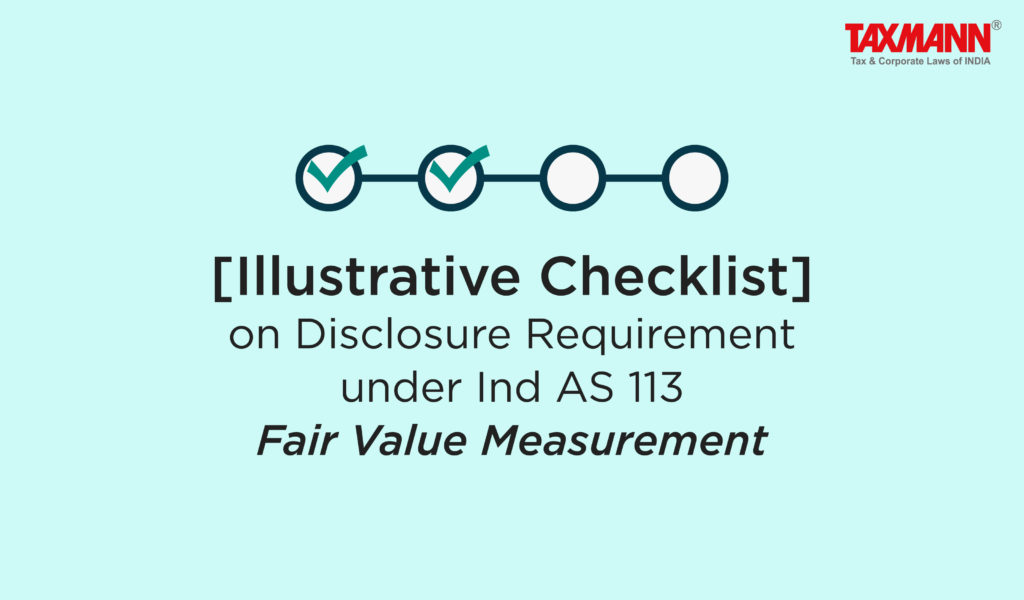[Illustrative Checklist] on Disclosure Requirement under Ind AS 113 | Fair Value Measurement
- Blog|News|Account & Audit|
- 2 Min Read
- By Taxmann
- |
- Last Updated on 17 July, 2023

Ind AS 113, Fair Value Measurement, has multiple objectives including defining fair value, measuring fair value, and Fair Value Measurement. Fair value is a market-based measurement, not an entity-specific measurement. For some assets and liabilities, observable market transactions or market information might be available. For other assets and liabilities, observable market transactions and market information might not be available. However, the objective of fair value measurement in both cases is the same-to estimate the price at which an orderly transaction to sell the asset or to transfer the liability would take place between market participants at the measurement date under current market conditions (ie an exit price at the measurement date from the perspective of a market participant that holds the asset or owes the liability).
I. Has the entity disclosed the valuation methods and inputs used to develop measurements for assets and liabilities at fair value on a recurring or non-recurring basis in the balance sheet after initial recognition
II. Whether the effect of the measurements on profit or loss or other comprehensive income for the period disclosed for recurring fair value measurements using significant unobservable inputs
III. Whether appropriate classes of assets and liabilities are based on the nature, characteristics, and risks of the asset or liability, and the level of the fair value hierarchy within which the fair value measurement is categorized
IV. Has the entity disclosed and also consistently followed the policy for determining the transfers between levels in the fair value hierarchy that are deemed to have occurred
Click Here To Read The Full Story
Disclaimer: The content/information published on the website is only for general information of the user and shall not be construed as legal advice. While the Taxmann has exercised reasonable efforts to ensure the veracity of information/content published, Taxmann shall be under no liability in any manner whatsoever for incorrect information, if any.

Taxmann Publications has a dedicated in-house Research & Editorial Team. This team consists of a team of Chartered Accountants, Company Secretaries, and Lawyers. This team works under the guidance and supervision of editor-in-chief Mr Rakesh Bhargava.
The Research and Editorial Team is responsible for developing reliable and accurate content for the readers. The team follows the six-sigma approach to achieve the benchmark of zero error in its publications and research platforms. The team ensures that the following publication guidelines are thoroughly followed while developing the content:
- The statutory material is obtained only from the authorized and reliable sources
- All the latest developments in the judicial and legislative fields are covered
- Prepare the analytical write-ups on current, controversial, and important issues to help the readers to understand the concept and its implications
- Every content published by Taxmann is complete, accurate and lucid
- All evidence-based statements are supported with proper reference to Section, Circular No., Notification No. or citations
- The golden rules of grammar, style and consistency are thoroughly followed
- Font and size that’s easy to read and remain consistent across all imprint and digital publications are applied



 CA | CS | CMA
CA | CS | CMA
